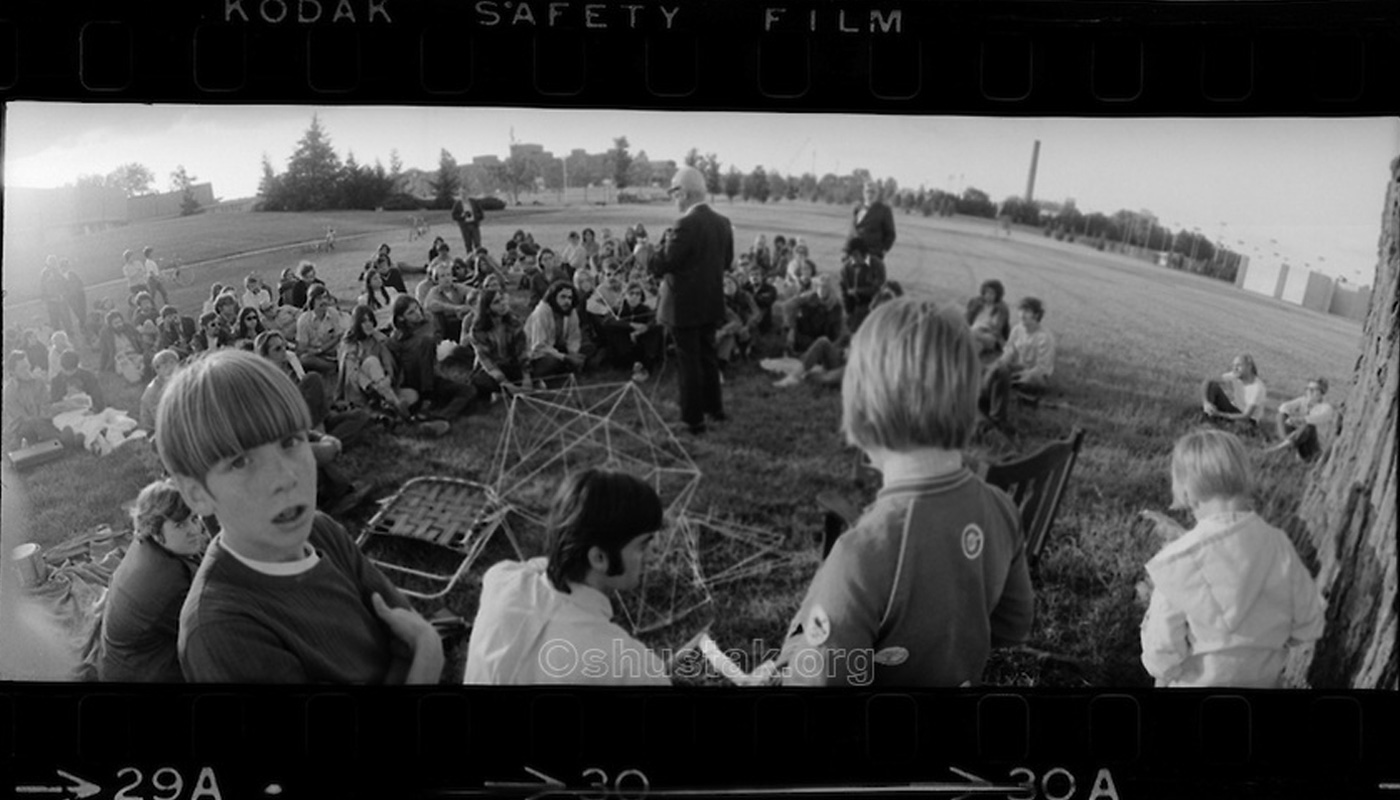
R. Buckminster Fuller at Southern Illinois University of Carbondale
Carbondale IL, USA
1955 > 1970
“From 1955 to 1970, the newly founded Department of Design at Southern Illinois University in Carbondale launched a series of overlapping modes of experimental teaching and communication. The industrial designer Harold Cohen had been recruited away from the New Bauhaus in Chicago (where he had just become head of product design) to be the first director of the school. He immediately took advantage of being off the usual map to challenge normative modes of education. The students were constantly thrown even further off the map. The first exercise—called “Who Are You and What Are You Thinking?”—simply dropped them off in the isolated wilderness for three days with just $10 and an emergency whistle. The idea was to understand through their absence the human extensions that they would be designing for the rest of their lives. Back in the school, design projects quickly took the form of applied research tasks, such as emergency housing in cardboard, and soon students were working on global issues. […]
A dome house was built for him a year later and highly promoted to simulate his residence, but Fuller’s presence remained that of a permanent nomad, dropping in for eight-week workshops in between similar workshops he was holding at other schools across the continent.
Starting in 1948, he had effectively invented a new kind of school made up of his parasitic workshops within other institutions, a kind of parallel processing machine. In 1961, he tried to expand and formalize this network, treating Carbondale as the central hub of a global research net. At the UIA congress in London, he called for all design schools in the world to abruptly stop teaching studio for a decade and work together on a definitive image of global resources, based on the research being done at Carbondale. […]
A month before the announcement in London, Fuller had made a key public lecture suggesting that the university itself should move into a dome without any internal divisions. It started with his calculation that he had been teaching 50,000 students in 106 different universities and ended with his arguing—in terms very close to those used today about online education—that the classroom of the future would be exponentially larger and electronic, using computers and two-way television.”
/Excerpts from a text by Mark Wigley for Radical Pedagogies/
/Photography by Larence N. Shustak/






